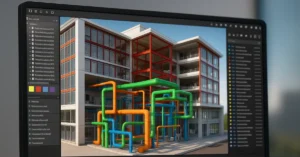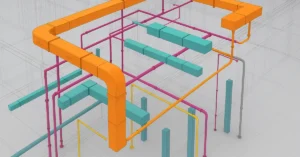Learn About the Leading Architecture Schools in Botswana
Botswana, a land of vast landscapes and rich cultural heritage, is rapidly advancing in its urban and architectural development. The nation’s architectural evolution reflects a blend of traditional African design and contemporary sustainability practices. To support this growth, educational institutions play a pivotal role in training skilled professionals. Among these, the University of Botswana (UB) stands out as the premier institution offering a comprehensive architecture program. This blog delves into the architecture program at UB, exploring its curriculum, facilities, and contribution to the field.
1. About the University of Botswana (UB)
The University of Botswana, located in Gaborone, is the leading higher education institution in the country. Established in 1982, UB has a legacy of academic excellence and innovation. It serves as a hub for research, cultural exchange, and professional development in Southern Africa. The university’s commitment to fostering a knowledge-based economy is evident in its wide range of programs, state-of-the-art facilities, and strategic collaborations.
The Department of Architecture and Planning, under the Faculty of Engineering and Technology, is a cornerstone of UB’s mission to advance architectural education in Botswana. By offering a Bachelor of Architecture (BArch) degree, the university equips students with the skills and knowledge needed to address the nation’s growing infrastructure needs while embracing sustainable and culturally relevant design principles.
Website: https://www.ub.bw/
Address: Private Bag UB 0022, Gaborone, Botswana
2. The Bachelor of Architecture (BArch) Program
The Bachelor of Architecture (BArch) program at UB is the only professional architecture degree offered in Botswana. Designed to meet international standards, this five-year program integrates theoretical studies with hands-on design experience. Below, we explore its key features:
2.1. Curriculum Structure
The BArch program is structured to provide a comprehensive education in architecture, combining core design courses with supplementary studies in related fields. The curriculum includes:
- Design Studio Courses: Students engage in hands-on projects that foster creativity, critical thinking, and problem-solving skills. Design studios focus on residential, commercial, and urban-scale projects.
- Architectural Theory and History: Courses explore the evolution of architectural styles and their cultural, social, and technological influences, with a special emphasis on African and Batswana traditions.
- Construction and Technology: Students gain an understanding of construction methods, materials, and structural systems, ensuring their designs are both innovative and practical.
- Sustainability and Urban Planning: The program emphasizes sustainable practices, energy efficiency, and urban development to address contemporary environmental and social challenges.
- Professional Practice: Courses prepare students for the realities of the profession, covering ethics, project management, and legal aspects of architectural practice.
2.2. Duration and Credit Requirements
The program spans five years, culminating in a professional degree. Students must complete a set number of credits, including core courses, electives, and a capstone design project. Internships are also integrated into the program, allowing students to gain real-world experience.
2.3. Admission Requirements
Applicants must meet the following criteria to qualify for admission:
- A minimum grade in English Language, Mathematics, Physics (or Science Double Award), and Art or Design and Technology.
- Submission of a portfolio showcasing creative work (optional but recommended).
- Passing an interview or entrance exam (depending on the year’s admission requirements).
2.4. Research Opportunities
UB’s architecture program encourages research on topics such as:
- Sustainable building practices in arid climates.
- Integration of traditional African design principles with modern architecture.
- Urbanization and its impact on Botswana’s socio-economic development.
3. Facilities and Resources
UB provides students with access to cutting-edge facilities and resources that enhance the learning experience. These include:
3.1. Design Studios
The university’s design studios are equipped with drafting tables, modeling tools, and advanced software for computer-aided design (CAD). These studios serve as collaborative spaces where students can experiment and bring their ideas to life.
3.2. Workshops
Workshops at UB offer tools and machinery for physical model-making and prototyping. Students learn how to construct scaled-down versions of their designs, an essential skill for visualizing and refining architectural concepts.
3.3. Digital Resources
The university provides access to licensed software such as AutoCAD, Revit, SketchUp, and Adobe Creative Suite. High-performance computers ensure smooth operation of these resource-intensive applications.
3.4. Library and Research Centers
UB’s library houses an extensive collection of architecture-related books, journals, and digital archives. Research centers on campus support interdisciplinary studies, fostering collaboration between architecture students and other departments like engineering and environmental science.
4. Focus on Sustainability
Sustainability is a core principle of UB’s architecture program. Botswana faces unique environmental challenges, including water scarcity and extreme temperatures. UB addresses these issues through:
- Curriculum Integration: Courses on sustainable design, energy-efficient buildings, and green technologies are mandatory.
- Community Projects: Students participate in initiatives to design affordable, eco-friendly housing for rural areas.
- Research: Faculty and students collaborate on research to develop innovative solutions for sustainable urban and rural development.
5. Career Prospects for Graduates
Graduates of the BArch program at UB are well-equipped to pursue careers in architecture and related fields. Career opportunities include:
- Architectural Design: Working as licensed architects to design residential, commercial, and public buildings.
- Urban Planning: Contributing to the development of sustainable cities and towns.
- Project Management: Overseeing construction projects from conception to completion.
- Research and Academia: Engaging in architectural research or teaching at academic institutions.
Graduates are also eligible to pursue advanced degrees or professional certifications, enhancing their qualifications for international opportunities.
6. Contributions to Botswana’s Architectural Landscape
The University of Botswana’s architecture program has had a profound impact on the nation’s architectural landscape. Alumni have contributed to:
- The design of sustainable housing solutions for urban and rural communities.
- Development projects in Gaborone and other cities, reflecting modern yet culturally rooted designs.
- Research initiatives that address Botswana’s unique climatic and socio-economic challenges.
7. Student Life and Extracurricular Activities
UB offers a vibrant campus life, ensuring students have a well-rounded experience. Architecture students can engage in:
- Clubs and Societies: Joining design and innovation clubs to network with peers and industry professionals.
- Competitions: Participating in local and international design competitions to showcase their skills.
- Workshops and Seminars: Attending events hosted by guest architects and industry experts.
Conclusion
The University of Botswana’s Bachelor of Architecture program is a testament to the institution’s commitment to excellence and innovation. By combining rigorous academic training with practical experience, UB prepares students to become leaders in the architectural field. The program’s focus on sustainability and cultural relevance ensures graduates are not only skilled professionals but also advocates for responsible and inclusive design. For aspiring architects in Botswana, UB is the gateway to a fulfilling and impactful career.
If you’re interested in learning more about architecture firms in Europe, check out this comprehensive list of the top 50 firms compiled by Archgyan. From innovative startups to long-established industry leaders, this list has it all. Take a look and discover some of the most inspiring and influential architecture firms in Europe today.
If you’re interested in architecture and want to learn more about this amazing field, subscribe to our podcast on youtube
For more SketchUp tutorials, head to https://www.sketchupguru.com










